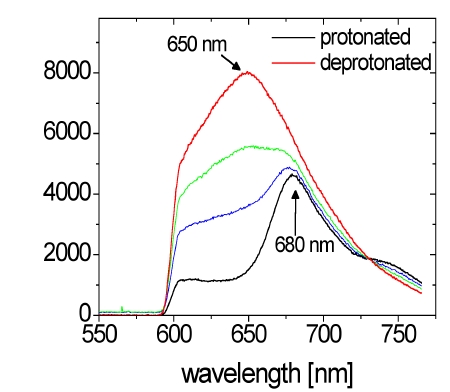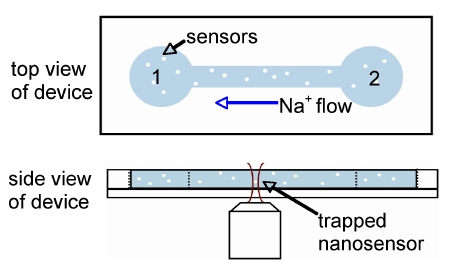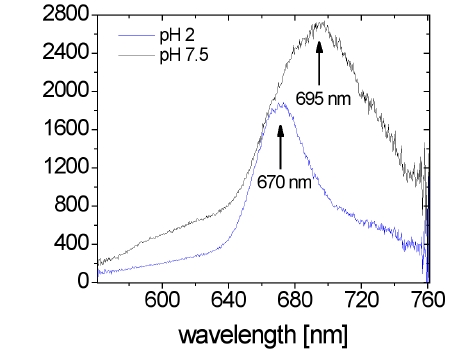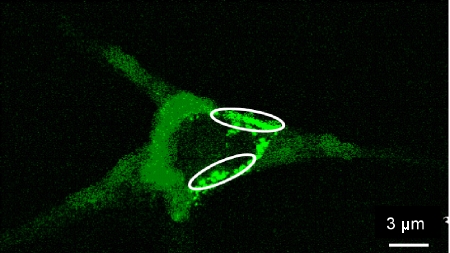Optical tweezer trapping of fluorescent ion nanosensorsIon optodes are ion-selective optical sensors designed for intracellular monitoring. They are polymer microbeads that contain an embedded ionophore and a protonated pH indicator (chromoionophore) and other elements that facilitate an ion exchange mechanism to directly detect changes in pH, and indirectly detect changes in primary ion concentration (at constant pH) through changes in the fluorescence spectrum of the chromoionophore. Prof. Shvarev's group in OSU Chemistry has developed optodes that sense K+, Na+, Ca2+, and pH. We are working with them to trap these sensors with optical tweezers and measure ion concentrations at controlled locations in microfluidic channels and inside cells. The microfluidic deveices are made in collaboration with Prof. Remcho's group in Chemistry. References:
|
|
 |
 |
|
The current state-of-the-art in cation-selective optical sensing is the optode, which responds according to a bulk extraction ion exchange equilibrium. Composed of a plasticized polymer matrix that is incorporated with a ligand (ionophore, L) that selectively binds the target ion (primary ion, M+), an ion exchanger that facilitates mass transport of ions (R-), and a protonated pH indicator (chromoionophore, CH+) that is responsible for signal transduction. Optodes directly detect change in the pH and indirectly detect changes in primary ion concentration through changes in the fluorescence spectrum. When the ion of interest is absent from the nanosensor environment the "protonated" fluorescence peak dominates (in this case ~680 nm). As the concentration of the ion of interest increases the "deprotonated" fluorescence peak increases (in this case ~650 nm). |
|
 |
 |
| Fluorescence measurements were made on individual pH nanosensors in an optical tweezer trap in a microfluidic device. The pH sensors were placed into the device in either a basic solution (pH~7.5) or an acidic solution (pH~2), with corresponding differences in the fluorescence spectra. We have made similar measurements with Na+ ion sensors. | |
 |
|
|
In collaboration with Prof. Prasad at ASU, we have recently injected K+ ion nanosensors into cells and observed intracellular potassium transients. |
|